GUN SHOPS
by John Barsness
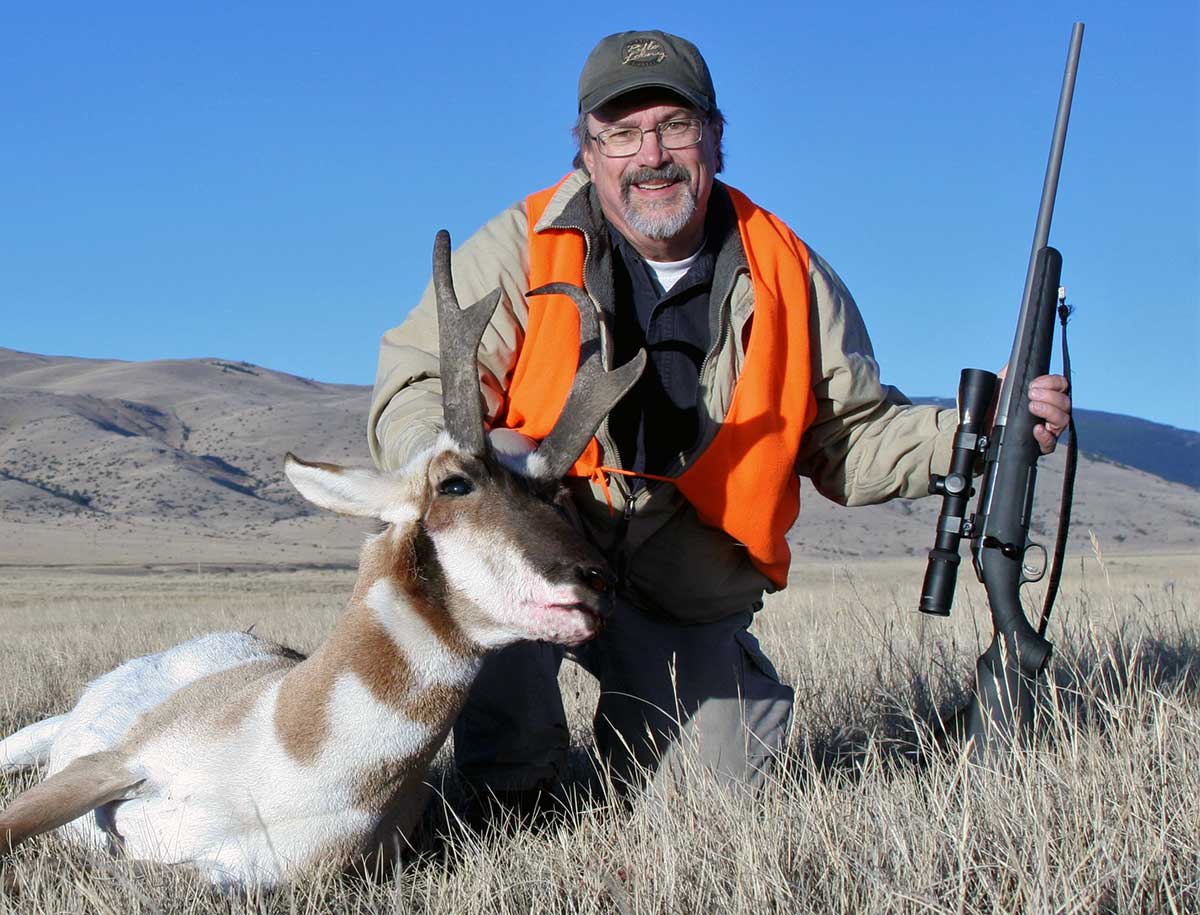
A FASCINATION with firearms appears to be innate in some people, though it may also be enhanced by experiences, especially early in life. This involves the old “nature versus nurture” debate, though of course among folks like you and me the question is essentially irrelevant.
What I do know is that my fascination began very early. My father wasn’t much of a hunter, mostly because he spent too much time subsistence hunting as a kid in rural Montana during the Great Depression. Yet he always liked guns, which is why my earliest memory of a gun shop occurred when I was five years old, just tall enough to see over the glass counter at the Powder Horn, then the primary gun shop in Bozeman, Montana, where I was born and grew up.
My father took me to the Horn one day, and I was standing next to him, my eyes barely above the countertop, when the guy helping us placed a “wood-grain” cardboard box on the glass. He lifted the top off the box, revealing a brand-new handgun, which a few years later I came to understand was a Colt Frontier Scout .22 rimfire, a scaled-down version of their famous centerfire single-action revolver. My father examined the Scout for a couple of minutes, then said he’d take it.
Eventually I also learned the reason behind the purchase (aside, of course, from simply wanting the little Colt) was a celebration: My father had sold an article to one of the pulp-paper Western history magazines popular in those days, about one of the U.S. Army forts established back when Montana was still a U.S. Territory, not a state. We later spent parts of several summer vacations visiting other forts from the same era, including some in Wyoming and Colorado, while he researched similar articles. But he wanted to commemorate his very first magazine sale, and the check covered the Colt’s price, which as I recall from that day in the Powder Horn was $50 — which correlates with the first listing of the Frontier Scout in GUN DIGEST’s 1958 annual, $49.95.
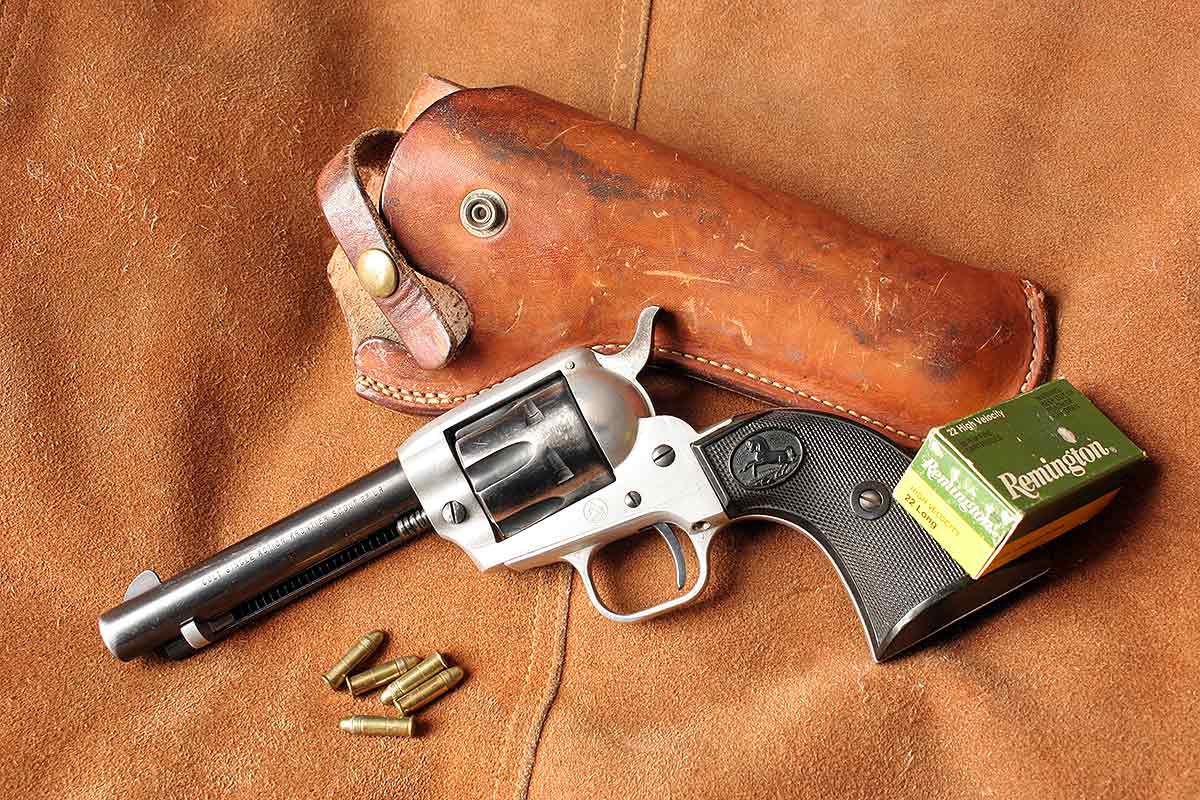
It was also the first firearm I ever fired. On summer weekends our family frequently took country drives on the unpaved roads around Bozeman — now paved and surrounded by subdivisions. Eventually we’d happen upon a roadside gravel cut, used to add more pebbles to the road’s surface. These always contained a few empty beer and pop cans, complete with bullet holes, and those in the family big enough to hold the Colt would spend an hour or so plinking away.
My brother and I were fascinated by the empty cases, picking them up and keeping them in a big jar in the bedroom we shared. They were always .22 Longs, which my father believed were “just as good” as the more expensive .22 Long Rifles, but back then cost several cents less per 50-round box. After all, Longs were just about the same size as Long Rifles, and as a kid he’d killed plenty of cottontails and grouse with them.
Apparently all gun shops had wooden floors back then — as did many other stores, including Heeb’s Grocery in the middle of downtown Main Street, today a much larger and shinier supermarket on the east end of town. Wood-floor gun shops had a distinctive smell, a mix of the scent of the lumber itself, released as boots wore away the finish, plus tobacco smoke, and a hint of “gun oil” and Hoppe’s No. 9 from the gunsmithing department. Most real gun shops, such as the Powder Horn, offered various levels of gunsmithing, unlike the sporting goods departments in the nearby hardware stores.
The first really big gun store I remember was north of St. Paul, Minnesota. In the 1960s our family spent three scattered years in the Twin Cities while my parents acquired graduate degrees at the University of Minnesota. The four kids were in elementary school, and the family still sometimes went on country drives during weekends, though we did not do any country plinking.
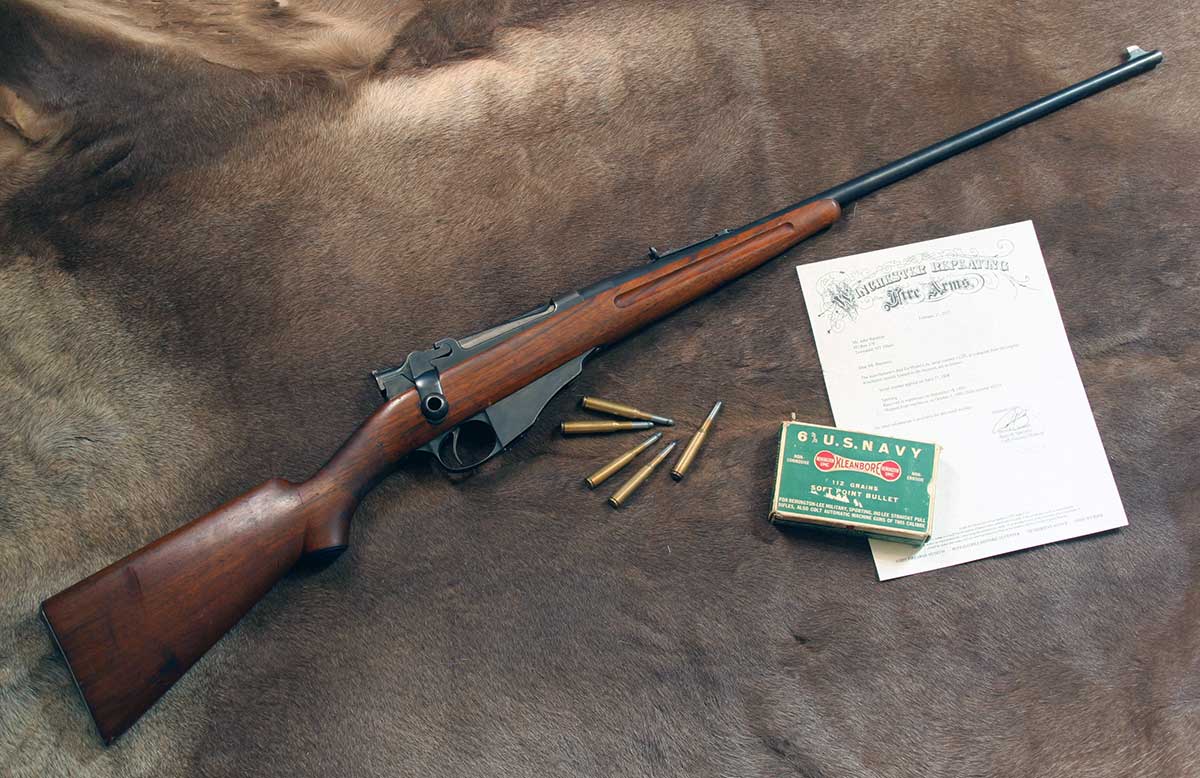
Somewhere north of St. Paul we happened upon the big gun store, which like the Powder Horn had wooden floors and the same mix of scents. But the storefront was three times as wide as the Powder Horn’s, and the inside seemed to be as long as a city block. There were glass counters along all the walls, containing handguns, ammo and handloading supplies. Between the counters were several aisles, bordered by long guns standing upright in wooden racks. We looked at lots of guns, including a replica percussion Colt revolver that my father considered for quite a while, but eventually passed up.
During our last year in Minnesota I turned 13, and made my first gun buy at that store — though of course my father had to perform the actual purchase — a Marlin Model 81 .22 rimfire that I still have, along with the Frontier Scout. I don’t recall my father doing anything but plink with the Colt, but I have packed it quite a bit on local big game hunts, taking cottontail rabbits, snowshoe hares and ruffed, blue and spruce grouse. Handgunning “mountain grouse” is an old Montana tradition and totally legal, though you can’t use anything but shotguns or arrows on any other upland game in the state.
Since then I’ve visited many gun shops across the Lower 48 from Florida and Pennsylvania to Arizona and Washington, including Lolo Sporting Goods in Lewiston, Idaho, where Jack O’Connor used to shop and trade, which also has wood floors and offers gunsmithing services. There have also been several in Alaska, from big stores in Anchorage down to the tiny general store in the village of Sleetmute, which during my visit in 2009 claiming an official population of 86. The rack behind the counter held a row of new Ruger Hawkeye Alaskans in .375 Ruger, and on the floor stood several stacks of more .375 Ruger ammo than I’ve seen in one place since.
There have also been dozens of gun shops in foreign countries from Canada to Europe to southern Africa. Some even had wooden floors and the “correct” smell, including more than one German shop. Many gun shops in Germany also contain complete gunsmithing shops, because even some of their “factory” firearms are at least semi-custom. I also bought a couple of traditional woven rifle slings from a gun shop in Bergen, Norway, where the handloading section contained the only box of 400-grain .416 Swift A-Frames I’ve ever seen on a store shelf, even in Africa — probably for polar bear hunters.
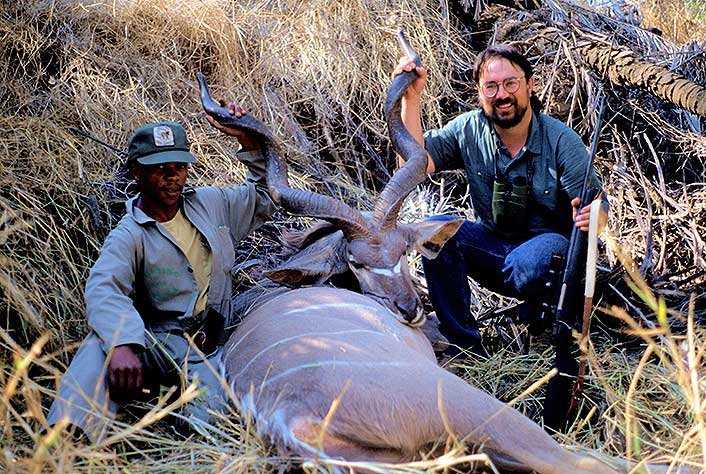
The gun shop I’ve frequented most over the past three decades is Capital Sports and Western Wear in Helena, Montana, the local “big” town where Eileen and I regularly shop for stuff not available in our little town. Capital, like the other gun shops in Helena, is an all-around sporting goods store, and of course also sells “western wear,” much of it hunting clothing. But the gun section not only offers the best array of used firearms of the gun stores in town (two of which only sell new guns) but a good gunsmithing shop. For many years, in fact, one of the gunsmiths was a guy named Arnold Erhardt, who built plenty of custom rifles from old-style flintlocks to modern benchrest rifles (including my 6mm PPC). Arnold “retired” several years ago — after helping Tyler Hansen, his eventual replacement, get started — but gunsmiths rarely really retire, and Arnold still builds a few rifles.
One of the conclusions I’ve come to since first accompanying my father to the Powder Horn is that really good gun stores share certain characteristics. These days very few have wooden floors, but neither do many other 21st-century stores. Instead the most important characteristic of good gun shops is the people running the place, who feel about guns the same way we do. They may not have exactly our preferences, but they appreciate all gun preferences — and generally even the lower-level clerks are competent in helping us with ours.
This is the big advantage of Capital Sports over the other three stores in town. Capital does not have the best handloading or ammo selection, in fact they might be the sparsest of the four stores. The winner in that category is a chain store that appeared around a decade ago, on the opposite, “new” side of town. But the chain store only sells new rifles, the kind some Campfire loonies complain about — the rifles that appear on the covers of the latest printed gun magazines, often chambered for the latest in-cartridges. Of course Capital sells those as well, but is definitely the only gun shop in town where you have an equal chance of running across a new 6.5 Creedmoor or .338 Lapua, and military and hunting rifles made in the 1800s.
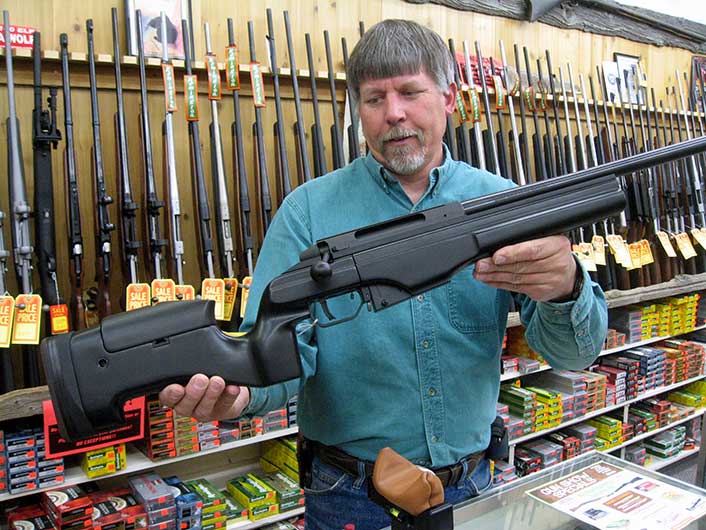
In fact the Capital gun shop has entire walls covered with older guns, many not for sale, from muzzleloaders to old bolt-action military rifles. One of these is a .30-40 Krag with an original, Army-issue canvas bandolier of 220-grain FMJ military loads. (I contributed the bandolier, one of two acquired in an ammo trade with another rifle loony.)
There are also shelves, just below the ceiling, full of ammunition that’s not for sale, including both military ammo and “old stock” factory ammo — often cartridges rarely, if ever, produced major factories anymore, including some from companies that ceased to exist decades ago. There are boxes of original .56-56 Spencer rounds, Savage-brand .22 High Powers, Winchester “grizzly” boxes full of cartridges such as the .33 WCF. No matter which way you turn, there’s no doubt you’re in a real gun shop. (Now, I do not want to give the impression that Capital Sports is the only good gun shop in Montana. There are others, but all farther from our home, such as Shedhorn Sports in Ennis and The Fort in Big Timber, distance being the reason we only visit them once or twice a year.)
Another gun shop we do not frequent due to distance, but is even larger than the Minnesota store where I purchased my Marlin .22, is Whittaker Guns (www.whittakerguns.com) on the southwestern outskirts of Owensboro, Kentucky. Eileen and I spent a couple days there in 2015, and unlike some modern gun shops it only sells guns and hunting gear. It had several dozen two-tiered aisles of upright long guns, and also several long handgun counters. Perhaps even more astonishing at the time, toward the tail end of the “Obama shortages,” it had a good supply of rimfire ammo, plus dozens of handloading powders I hadn’t see in stores OR on Internet sites for months or even years. It’s also a large enough business to order special-run guns, like the 1-8 twist Ruger American Rifle .22-250 I used to take the largest pronghorn buck in our Montana valley in the fall of 2018.
Eileen and I left with sizable dents in our shooting budgets. Among other things, I bought a Model 64 Winchester .30-30 with a Lyman 56 receiver sight, and Eileen a Ruger Single-Six Convertible, with .22 Long Rifle and .22 Magnum cylinders and a 9-1/2 inch barrel. And in every department, the clerks we talked to knew what they were talking about.
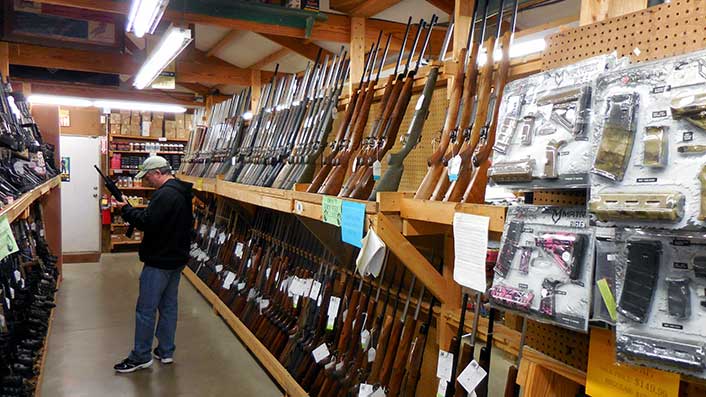
Since then Whittaker Guns has built an even bigger store. (You can compare the new store with the photos of the old store shown here at www.whittakerguns.com.) We have not returned, but need to, as it’s one of those places that, like Yellowstone National Park, requires more than one visit to really comprehend. Right now they claim an inventory of 35,000 guns, and I wouldn’t be surprised if there were actually more.
You can also take a look at Capital Sports at www.shopcapitalsports.com. They resisted the Internet for a while, but like all of us — even those who remember the scent of wood-floored gun shops, and shop for both old and new guns — eventually accepted the 21st century.
John’s new book MODERN HUNTING OPTICS and other great stuff can be ordered online at www.riflesandrecipes.com.
Stay Connected
- Got a Break in the Montana Missouri Breaks
- It Took Six Days but We Finally Slipped One Past the Bears and Wolves
- No Mule Deer This Fall – Whitetail TOAD!
- An Accounting of Four Idaho Bulls (Elk)
- Arizona Deer Hunt 2019: Good Times with Great Guys
- Caught a Hornady 143 ELDX Last Night
- Cookie’s 2019 Mule Deer Photo Run
- Let’s See Some Really Big Deer
- Alaskan Moose Hunt Success!
- Take a Mauser Hunting: An Important Message From The Mauser Rescue Society!
- Welcome 16 Gauge Reloaders! Check In Here.
- Off-Hand Rifle Shooting – EXPERT Advice
- BOWHUNTING: A Wide One!

